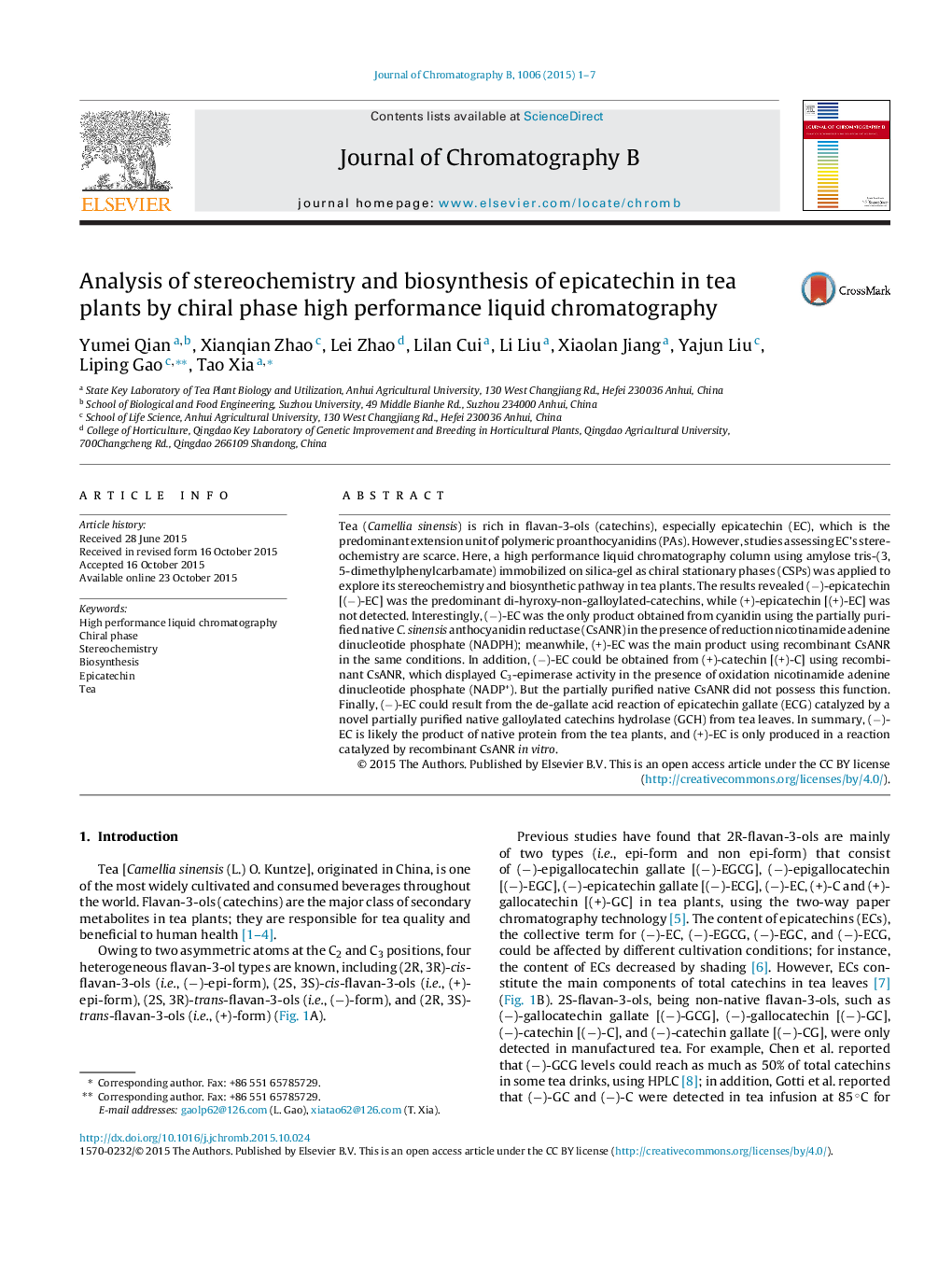| کد مقاله | کد نشریه | سال انتشار | مقاله انگلیسی | نسخه تمام متن |
|---|---|---|---|---|
| 7616652 | 1494045 | 2015 | 7 صفحه PDF | دانلود رایگان |
عنوان انگلیسی مقاله ISI
Analysis of stereochemistry and biosynthesis of epicatechin in tea plants by chiral phase high performance liquid chromatography
ترجمه فارسی عنوان
تجزیه و تحلیل استریو شیمی و بیوسنتز اپیکاتچین در گیاهان چای با استفاده از کروماتوگرافی مایع با کارایی بالا
دانلود مقاله + سفارش ترجمه
دانلود مقاله ISI انگلیسی
رایگان برای ایرانیان
کلمات کلیدی
موضوعات مرتبط
مهندسی و علوم پایه
شیمی
شیمی آنالیزی یا شیمی تجزیه
چکیده انگلیسی
Tea (Camellia sinensis) is rich in flavan-3-ols (catechins), especially epicatechin (EC), which is the predominant extension unit of polymeric proanthocyanidins (PAs). However, studies assessing EC's stereochemistry are scarce. Here, a high performance liquid chromatography column using amylose tris-(3, 5-dimethylphenylcarbamate) immobilized on silica-gel as chiral stationary phases (CSPs) was applied to explore its stereochemistry and biosynthetic pathway in tea plants. The results revealed (â)-epicatechin [(â)-EC] was the predominant di-hyroxy-non-galloylated-catechins, while (+)-epicatechin [(+)-EC] was not detected. Interestingly, (â)-EC was the only product obtained from cyanidin using the partially purified native C. sinensis anthocyanidin reductase (CsANR) in the presence of reduction nicotinamide adenine dinucleotide phosphate (NADPH); meanwhile, (+)-EC was the main product using recombinant CsANR in the same conditions. In addition, (â)-EC could be obtained from (+)-catechin [(+)-C] using recombinant CsANR, which displayed C3-epimerase activity in the presence of oxidation nicotinamide adenine dinucleotide phosphate (NADP+). But the partially purified native CsANR did not possess this function. Finally, (â)-EC could result from the de-gallate acid reaction of epicatechin gallate (ECG) catalyzed by a novel partially purified native galloylated catechins hydrolase (GCH) from tea leaves. In summary, (â)-EC is likely the product of native protein from the tea plants, and (+)-EC is only produced in a reaction catalyzed by recombinant CsANR in vitro.
ناشر
Database: Elsevier - ScienceDirect (ساینس دایرکت)
Journal: Journal of Chromatography B - Volume 1006, 1 December 2015, Pages 1-7
Journal: Journal of Chromatography B - Volume 1006, 1 December 2015, Pages 1-7
نویسندگان
Yumei Qian, Xianqian Zhao, Lei Zhao, Lilan Cui, Li Liu, Xiaolan Jiang, Yajun Liu, Liping Gao, Tao Xia,
